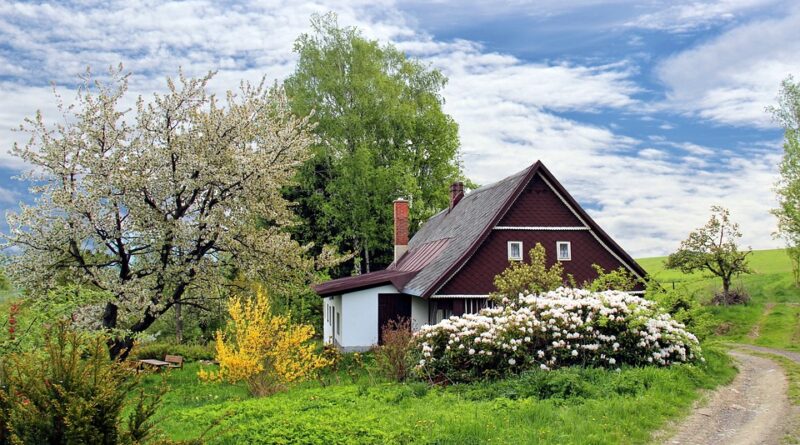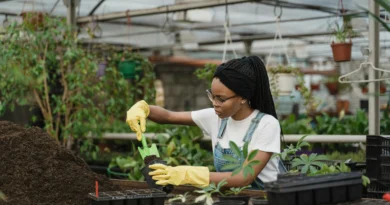Essential Home Garden Care Tips: Maintaining a Lush Green Oasis
Table of Contents
ToggleIntroduction
Welcome to a comprehensive guide on essential home garden care tips for maintaining a lush green oasis. Whether you are an experienced gardener or a beginner, this article will provide you with detailed information and practical advice to create and maintain a beautiful garden. From soil preparation and watering techniques to pest control and plant selection, we’ve got you covered. So, let’s dive in and discover the secrets to achieving a thriving and vibrant garden!
Preparing the Ground
The foundation of a successful garden lies in its soil, which must be prepared carefully before any planting takes place. By assessing soil quality, enhancing fertility, and testing pH levels, you can create an optimal environment for your plants to grow.
Assessing Soil Quality
Before starting any gardening project, it is crucial to understand the composition and characteristics of your soil. Conduct a simple soil test by taking a sample and sending it to a local soil testing laboratory. This will provide valuable information about its pH levels, nutrient content, and organic matter.
Enhancing Soil Fertility
To ensure your garden thrives, it’s essential to address any nutrient deficiencies in the soil. You can achieve this by using organic or synthetic fertilizers. Organic options, such as compost, manure, or bone meal, can help enrich the soil naturally and reduce the risk of harmful chemicals present in synthetic fertilizers.
Amending the Soil with Organic Matter
While fertilizers provide nutrients, organic matter plays a vital role in improving soil structure and water retention. Incorporating compost, leaf mold, or well-rotted manure into the soil will increase its organic content, promoting healthier plant growth and providing a better environment for beneficial soil organisms.
Testing Soil pH Levels
Soil pH is crucial for plant health as it determines the availability of nutrients. Most plants prefer a slightly acidic to neutral pH range. Adjusting the pH level using amendments like lime or sulfur can help ensure optimal nutrient uptake by the plants. pH test kits are readily available at garden centers to help you monitor and adjust pH levels accordingly.
Watering Techniques
Proper watering is integral to maintaining a healthy garden. By understanding your plant’s specific watering needs, determining the right amount of water, and employing proper watering techniques, you can help your garden thrive while conserving water resources.
Understanding Plant Watering Requirements
Different plants have varying water requirements based on their species, growth stage, and environmental conditions. Research the specific needs of each plant in your garden to ensure you provide them with adequate moisture. Factors such as humidity, temperature, and soil moisture retention also influence watering frequency and duration.
Determining the Right Amount of Water
Overwatering or underwatering can harm your plants. As a general guideline, most plants need around 1 inch of water per week. However, this can vary depending on factors such as rainfall, temperature, and the type of soil. To gauge soil moisture, insert your finger into the ground up to the first knuckle. If the soil feels dry, it’s time to water; if it feels damp, hold off on watering.
Proper Watering Techniques
To protect the root system and optimize water absorption, it is crucial to water your plants deeply and infrequently. Watering deeply encourages root growth and ensures that water reaches the full depth of the root zone. Avoid frequent shallow watering, as it can result in shallow root growth and increased water loss through evaporation.
Considerations for Drip Irrigation Systems
Drip irrigation systems are a convenient and water-efficient method for watering a garden. They provide water directly to the root zone, minimizing water loss through evaporation. Consider installing a drip irrigation system to tailor water delivery to individual plants and conserve water resources effectively.
Pest Control
Dealing with pests is a common challenge faced by gardeners. By identifying common garden pests, using natural pest control methods, implementing companion planting techniques, and incorporating physical barriers, you can protect your plants and promote a healthy garden environment.
Identifying Common Garden Pests
Garden pests come in various forms, including insects, rodents, and even certain plant diseases. Identifying these pests is crucial for implementing appropriate control measures. Look out for common culprits such as aphids, slugs, snails, caterpillars, and fungal infections. Once identified, you can research specific control methods for each pest.
Natural Pest Control Methods
Embracing organic and natural pest control methods is not only environmentally friendly but can also be effective in reducing pest populations. For instance, introducing beneficial insects like ladybugs or lacewings can help control aphids. Neem oil, soap sprays, and garlic-based solutions are also powerful natural remedies against pests.
Companion Planting
Companion planting involves strategically placing certain plants together to benefit one another by repelling pests or attracting beneficial insects. For example, marigolds are known to repel various harmful insects, while planting basil near tomatoes can enhance tomato growth while deterring pests.
Physical Barriers
Creating physical barriers can help protect your garden from pests. Use netting or cages to prevent birds, rabbits, or deer from damaging your plants. Installing copper tape around pots can deter slugs and snails, while floating row covers can protect against flying insects.
Conclusion
In conclusion, maintaining a lush green oasis in your home garden requires careful attention to soil preparation, watering techniques, and pest control. By understanding soil quality, addressing nutrient deficiencies, and testing pH levels, you can create an optimal environment for plant growth. Additionally, employing proper watering techniques, considering drip irrigation systems, and determining plant-specific watering requirements will ensure efficient water usage. Finally, identifying common pests, utilizing natural pest control methods, exploring companion planting, and utilizing physical barriers can help protect your plants from harm. With these essential home garden care tips, you are well-equipped to create and maintain a thriving and beautiful garden oasis.




